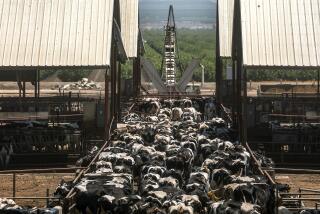The Ugly Beauty
- Share via
Let’s face it: Look it in the eye, and the California condor is not a terribly appealing creature. It is a big, gray, bald-headed bird with ugly wattles and beady red eyes. As a form of vulture, the condor feeds on carrion--a role that somebody has had to fill down through the ages, but not the sort of pastime that would add to a glamorous image.
But there have been many reasons behind all the effort expended over the years to save the condor from extinction. The California condor is one of the world’s largest flying birds. It has a wingspan of up to 10 feet. It can soar for miles at a time, at great speed, over its 11-million-acre habitat centered in Ventura and Kern counties. From a distance the soaring condor is a majestic sight.
The condor is one of our rare living links with the past, dating from pre-Ice Age times. Some of its ancestors have been found with other prehistoric creatures in the La Brea tar pits.
A few years ago as many as 30 California condors survived in the wild. That number has fallen to six, and three of the birds are being captured for use in a program to perpetuate the species in captivity. The other three may not survive. Attempts will be made to reintroduce some of 21 captive condors to the wild. Such efforts have been successful with Andean condors, but no one knows if the California birds will make it.
The end has come for the wild condor as we know it. But it may have a future if the transplant program is given a chance to succeed. To that end, the wild-condor habitat must be preserved intact for as long as there is an opportunity for the condor to soar in freedom again.






